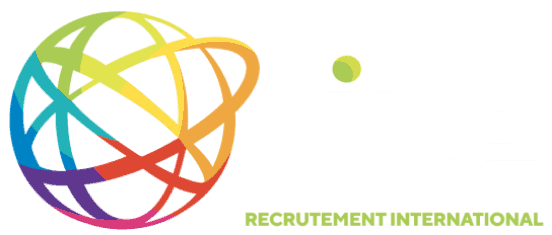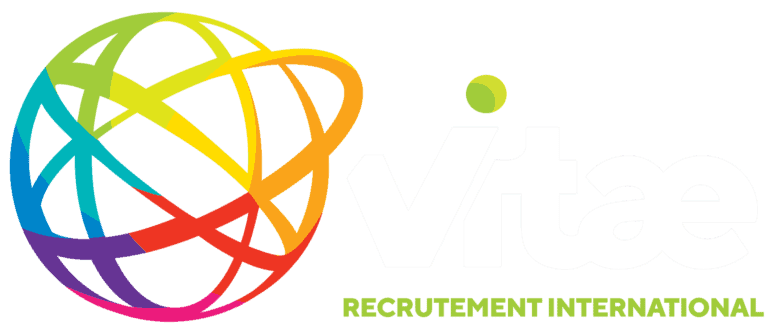You are seduced by the idea of hiring a foreign worker and decide to take action. Everything goes perfectly. The interviews are over. The candidate has been selected. You have even begun to prepare for his or her integration into the company. However, there is still one major point to settle: government immigration procedures. Here are five points of advice, reality and clarification before you start applying for your LMIA and CAQ.
One Application, Two Steps
To begin with, all temporary foreign workers (TFWs) must go through two levels of immigration to work in Canada: Service Canada, at federal level, plus the Ministère de l’Immigration, de la Francisation et de l’Intégration (MIFI), if your business is located in Quebec, at provincial level. As a result, when you apply as an employer, you must first obtain a positive Labour Market Impact Assessment (LMIA) from Service Canada and eventually the MIFI, if the job is located in Quebec, for the TFW to receive the Quebec Acceptance Certificate (CAQ). This is a prerequisite for the TFW to be able to apply for a work permit.
In short, before welcoming your new employee, you will have two crucial steps to complete: the LMIA (and the CAQ simultaneously if you are in Quebec, with some exceptions), and then the work permit application. Are you still with me? I hope so, because that is not all! The procedure for applying for an LMIA varies according to the position you are offering the candidate. Let us take a closer look.
Which Program to Choose?
Now, what steps should be taken depending on the position chosen? As far as the CAQ is concerned, when it is required, it is always the same procedure. As explained above, it is with the LMIA that things get tricky. First of all, it is possible that the position for which you are hiring abroad does not require an LMIA according to the International Mobility Program (IMP).
To be sure, you will need to search through the many exemption codes available. If the position you want to fill is one of the lucky ones, congratulations, you have just saved yourself a lot of work and expenses! But let us be realistic. Few positions in short supply will spare you the LMIA. What is more, you should be aware that certain programs offered across Canada are not available in Quebec. In addition to IMP, here are the five programs you will have to choose from to apply for the LMIA.
The Regular Process
This applies to the majority of jobs listed in the National Occupational Classification. It is divided into two distinct categories:
- Low wage (minimum wage): For all positions where the salary offered is below the provincial median wage;
- High wage: Conversely, reserved for jobs where the wage offered is equal or above the provincial median wage.
The Simplified Process (Quebec)
As its name suggests, this option allows for a simplified procedure by avoiding the need for proof of recruitment efforts. Only positions listed as being in shortage in Quebec are eligible for this request.
The Global Talent Stream:
Targeted towards management and IT positions. It enables rapid processing within 10 working days.
Application for Homecare Providers
Same steps as the regular process, except that the applicant must also provide evidence that he/she requires home care.
Recruitment of Agricultural Workers
Agricultural sector: Allows you to hire workers in primary agriculture;
Seasonal Agricultural Worker Program: Allows you to hire workers for a maximum period of 8 months from specific countries.
Let us do the math together. There is also the IMP, which exempts from LMIA. In addition, there are these five categories, two of which are themselves divided into two different components. That makes a total of eight possibilities for LMIA applications alone. As you can see, it takes a lot of time just to sort it all out.
Paperwork Efforts
Once you have sorted through all these government procedures, it is time to get the right forms. And get on with it, because there are a lot of them! Not only that, but federal and provincial governments sometimes change them without notice. If, by mistake, you fill out an expired form, unfortunately, your application will be rejected. That is why it is crucial to stay informed about any changes! Of course, the forms to use vary depending on the process suitable for the position offered. But what about the total number of forms to fill out? Let us take an example of a regular process application, which is often requested.
- LMIA: 1 form, 5 company legitimacy documents, 2 additional appendices, depending on the case, 5 proofs of recruitment efforts (because yes, you have to prove that, as we will see in the next point);
- CAQ: 3 forms to be filled out by the employer and 2 additional forms to be filled out by the TFW, in addition to all the documents required for the application, of which there are at least 6;
- Work permit: 2 government forms, 9 required documents, a medical examination and, finally, the collection of biometric data.
- Total: 35 documents to collect, including 8 forms to fill out. Note that some of these documents themselves require forms to be completed by the TFW in order to obtain them (passport or criminal record, for example). It is a bit like Asterix’s Twelve Labors, having to obtain the famous A-38 pass, is it not?
Time Constraints
As mentioned above, obtaining an LMIA for a “regular” position requires providing proof of recruitment efforts. It is important to be careful about the completion timeline of the application, as recruitment efforts must have been conducted within the three months preceding the application submission. Is that ample time, you ask? Review the figures from the previous point and consider that life is full of unforeseen events. Despite your best intentions, it is not just you who has forms to fill out; the immigrant worker does too. They likely do not have the same familiarity with Canadian bureaucracy and may require your assistance. Remember, the CAQ must be submitted simultaneously with the LMIA. There are several parameters to juggle with.
Not to mention that you will have a maximum of six months to submit the TFW work permit application once the LMIA has been approved. Finally, if you succeed on your own and the long-awaited worker arrives on Canadian soil, remember that work permits are often issued for a period of one year. As a result, you will have to reapply six months before the permit expires to extend the worker’s presence in your company. In short, it takes time to make a proper application, and three months can go by very quickly when you are taking steps you have never taken before, without any advice or supervision.
And What About The Fees?
The last point, and certainly not the least to understand before embarking on government immigration procedures alone, is the financial aspect. What are the administrative fees for submitting LMIA, CAQ, and work permit applications? Firstly, for all profiles, the LMIA costs $1000 CAD per position requested. However, if the LMIA is exempted, it will cost $230 CAD to ensure employer compliance. Secondly, the temporary selection request, needed to obtain the CAQ, is cheaper at $199 CAD per worker, plus the employer fees which are another $199 CAD. Lastly, the temporary work permit costs $155 CAD plus biometric fees of $85 CAD per person.Therefore, a standard application can cost up to $1439 CAD.
Remember : these fees are non-refundable. This means that if the application is rejected, you initially lose $1199 CAD. If the application is accepted but the work permit is subsequently denied (yes, that is possible!), $1439 CAD will have been spent for nothing, as the worker will have to reapply or you will have to replace that person. The key takeaway is vigilance and thoroughness when undertaking such procedures, as mistakes can be costly.
The Solution:
In short, starting a government immigration process is not a task to be taken lightly. The simultaneous applications, the program selection, the quantity of forms, and the financial risks underscore the need to invest time and preparation into hiring a Temporary Foreign Worker (TFW). The solution is to save all that time and energy and enjoy the peace of mind that comes with hiring your next foreign worker : rely on our expertise in legal procedures. We offer comprehensive services and peace of mind. For more information, visit the “Business Services“ of our website.
References:
Cic.gc.ca. (2019). Fee List. [online] Available at : https://ircc.canada.ca/english/information/fees/fees.asp [Accessed July 8, 2019].
Employment Canada (2019). Requirements of the Program for Low-Wage Positions – Canada.ca. [online] Canada.ca .Available at: https://www.canada.ca/en/employment-social-development/services/foreign-workers/median-wage/low/requirements.html [Accessed 08 July 2019].
Employment Canada (2019). Hiring temporary foreign workers in Quebec – Canada.ca. [online] Canada.ca. Reposted from:https://www.canada.ca/en/employment-social-development/services/foreign-workers/quebec.html [Accessed 08 July 2019].
Fr.wikipedia.org. (2019). 2016-08 Canada Quebec Flags.jpg. [online] Available at: https://fr.wikipedia.org/wiki/Fichier:2016-08_Canada_Quebec_Flags.jpg [Accessed 8 Jul. 2019].
Immigration-quebec.gouv.qc.ca. (2019). Immigration, Diversity, and Inclusion Quebec – Fees and Payment Methods. [online] Retrieved from: https://www.immigration-quebec.gouv.qc.ca/fr/immigrer-installer/travailleurs-temporaires/obtenir-autorisations/frais.html, [Accessed 8 Jul. 2019].
Immigration-quebec.gouv.qc.ca. (2019). Immigration, Diversity, and Inclusion Quebec – Hiring a Temporary Foreign Worker. [online] Retrieved from: https://www.quebec.ca/en/immigration/work-quebec/temporary-workers/temporary-foreign-worker-program [Accessed 8 Jul. 2019].
Immigration-quebec.gouv.qc.ca. (2019). Immigration, Diversity, and Inclusion Quebec – Temporary Foreign Workers Exempt from Obtaining a Quebec Acceptance Certificate (CAQ). [online] Retrieved from:https://www.quebec.ca/en/immigration/work-quebec/temporary-workers/temporary-foreign-worker-program [Accessed 8 Jul. 2019].
Immigration, R. (2019). International Mobility Program: Codes for Exemption from the Labour Market Impact Assessment (LMIA) – Canada.ca. [online] Retrieved from:https://www.canada.ca/en/immigration-refugees-citizenship/corporate/publications-manuals/operational-bulletins-manuals/temporary-residents/foreign-workers/exemption-codes.html [Accessed 8 Jul. 2019].
Noc.esdc.gc.ca. (2019). Welcome to the National Occupational Classification 2016.online] Available at: http://noc.esdc.gc.ca/Francais/CNP/Bienvenue.aspx?ver=16 [Accessed 8 Jul. 2019].






